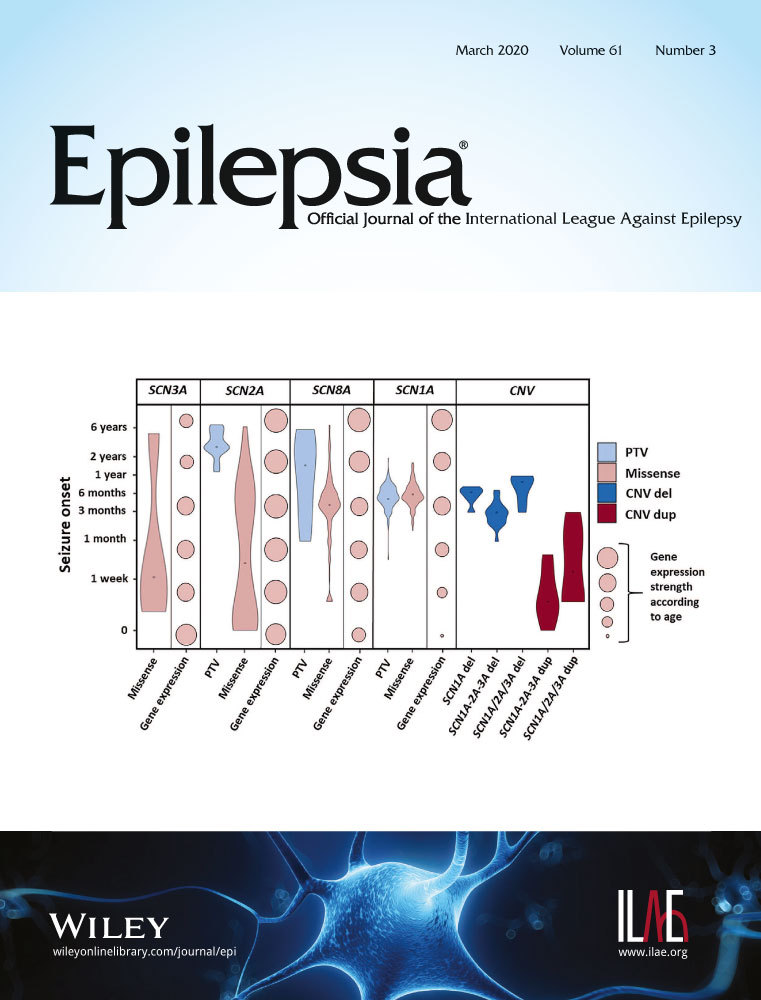Treatment initiation decisions in newly diagnosed epilepsy–A longitudinal cohort study
Funding Information
UCB Pharma.
Abstract
Objective
To examine the factors and reasons influencing treatment initiation decisions in patients with newly diagnosed epilepsy.
Methods
We assessed antiseizure medication initiation decisions in adults with newly diagnosed epilepsy seen at first seizure clinics in Western Australia between 1999 and 2016 and followed to 2018.
Results
Of 610 patients (median age 40 years, 61.0% male), 426 (69.8%) were diagnosed after two or more seizures and 184 (30.2%) after a single seizure with risk factors for recurrence. Treatment was commenced in 427 patients (70.0%) at diagnosis, 112 (18.4%) during follow-up, mostly after further seizures, whereas 71 (11.6%) remained untreated at last follow-up. Elders (≥65 years, odds ratio [OR] = 3.06, 95% confidence interval [CI]: 1.62-5.80), more seizures (OR = 3.48, 95% CI: 2.03-5.96), and epileptogenic lesions on neuroimaging (OR = 2.15, 95% CI: 1.26-3.68) had a higher likelihood of treatment at diagnosis. Patients with less than one seizure per year within the preceding year (OR = 0.40, 95% CI: 0.21-0.73) and of higher socioeconomic status (OR = 0.985, 95% CI: 0.977-0.994) were less likely to be treated. For 93 patients (15.2%), treatment was not recommended at diagnosis, most commonly because only a single seizure had occurred. Ninety patients (14.8%) declined recommended treatment, mostly because they were unconvinced of the need for treatment or the diagnosis.
Significance
Thirty percent of adults with newly diagnosed epilepsy were not immediately treated. Treatment initiation in this real-world cohort was influenced by age, number of seizures prior to diagnosis, imaging findings, patient preferences, and socioeconomic status.
CONFLICTS OF INTEREST
Dr Kwan is supported by the Medical Research Future Fund Practitioner Fellowship. Outside the submitted work, Dr Kwan has received research grants from the National Health and Medical Research Council of Australia, the Australian Research Council, the U.S. National Institutes of Health, Hong Kong Research Grants Council, Innovation and Technology Fund, Health and Health Services Research Fund, and Health and Medical Research Fund. His institution also received speaker or consultancy fees and/or research grants from Biscayne, Eisai, GW Pharmaceuticals, LivaNova, UCB Pharma, and Zynerba. Dr Lawn has received research funding support and consultancy fees/speaker honorariums from UCB and Eisai. This research funding is unrelated to this study. Dr Chen is supported by the NHMRC Early Career Fellowship and has received research grant from University of Melbourne Early Career Researcher Grant Scheme. This funding is unrelated to this study. Mr Sharma, Ms Rychkova, Dr Dunne, and Ms Lee have no conflicts to disclose. Dr Kalilani is an employee of UCB Pharma. We confirm that we have read the Journal's position on issues involved in ethical publication and affirm that this report is consistent with those guidelines.




